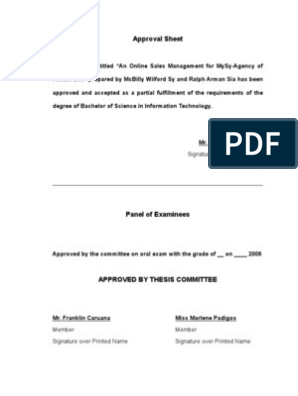90% found this document useful (21 votes)
14K views11 pagesFinal Chapter 3
This chapter discusses the research methods and software design for the study. Descriptive research was used to study and describe the current system. Data was gathered through surveys, interviews, observations, research, and questionnaires. Statistical tools like mean, weighted mean, t-test, CBA, and frequency distribution were used to analyze the data. The software design was developed using system flowcharts, IPO, HIPO, data flow diagrams, and context diagrams. The software development methods included planning, analysis, design, testing, and implementation.
Uploaded by
ThesisWritingDocCopyright
© Attribution Non-Commercial (BY-NC)
We take content rights seriously. If you suspect this is your content, claim it here.
Available Formats
Download as ODT or read online on Scribd
90% found this document useful (21 votes)
14K views11 pagesFinal Chapter 3
This chapter discusses the research methods and software design for the study. Descriptive research was used to study and describe the current system. Data was gathered through surveys, interviews, observations, research, and questionnaires. Statistical tools like mean, weighted mean, t-test, CBA, and frequency distribution were used to analyze the data. The software design was developed using system flowcharts, IPO, HIPO, data flow diagrams, and context diagrams. The software development methods included planning, analysis, design, testing, and implementation.
Uploaded by
ThesisWritingDocCopyright
© Attribution Non-Commercial (BY-NC)
We take content rights seriously. If you suspect this is your content, claim it here.
Available Formats
Download as ODT or read online on Scribd
/ 11







































































































